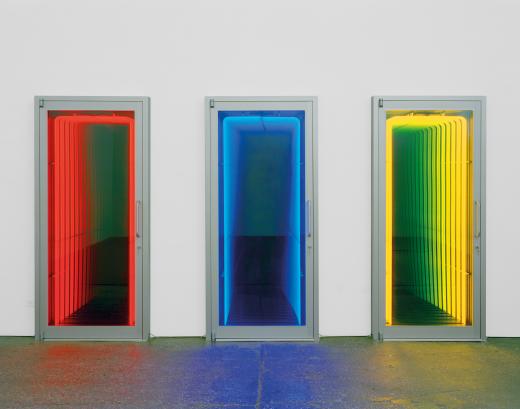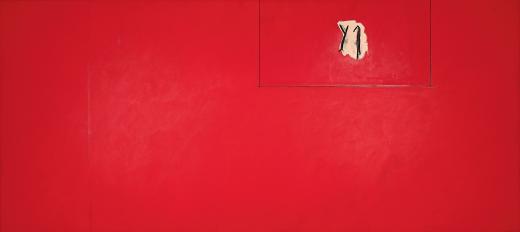FROM FRAME TO WALL: CLOSED SPACE
GALLERY 208
Chillida spoke about a “rumor of limits” in the space of sculpture. Walls and limits are, indeed, fundamental elements of space. We may imagine our planet as a gigantic web of limits, our bodies as an accumulation of membranes nestled inside each other. In recent history, works of art have often sought to assert themselves within their own, autonomous “frame,” enclosed within themselves through a strict geometry. In the 1970s, Bruce Nauman created a number of installations in which the viewer’s perception of their own body was drastically affected by an anomalous, uncomfortable space, like his Green Light Corridor; he also produced videos based on instructions given to actors in which he played with similar sensations. In that same decade, painter Robert Motherwell—one of the leading figures in Abstract Expressionism— began to mark large surfaces of color with modest boxes, alluding to the ancient purpose of painting as a window onto the world. Later, Peter Halley made the cell his leitmotiv to express modernism’s distressing obsession—both artistic and architectural—with geometry, a “grid-like” obsession which many of the earliest conceptual artists, such as Sol LeWitt, had painstakingly explored. Young Chilean artist Iván Navarro revisited this notion in many of his neon tunnels, which are as inaccessible as abstract paintings. Some of Matt Mullican’s most emblematic works are his series of abstract banners, which he sets forth as icons for a society controlled by large agencies and corporations.



